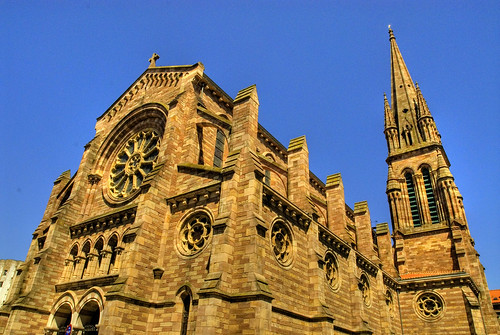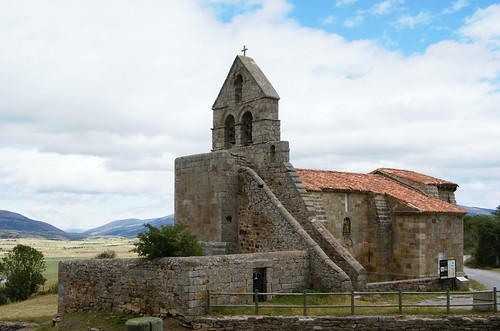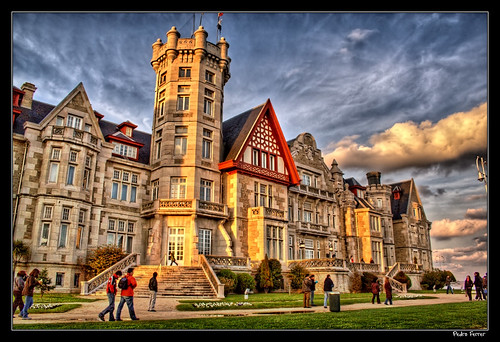
Bounded by the Cantabrian Mountains and the Picos de Europa is located the Liébana. Among its attractions is the authentic character of its people and its rich heritage. The peoples of Unquera line of separation between Asturias and Cantabria, Leben, his Mozarabic church of St. Mary of Lebeña, Piasca, Potes main town in the county, Mogrovejo or sources that are part of a sea route and the summit in the Picos de Europa. Liebana market offers the opportunity to taste the famous Quesucos of Liebana, cheese and Picon of Bejes Tresviso or wild boar sausages and venison.
Nansa Basin
This route runs through the beautiful landscapes of the river basin Nansa. With Pesues starts this route which will travel, among others, the people of Kadesh, Puentenansa, Tudanca, Cohílla Reservoir and Cabezuela Davies. In the municipality of Tudanca is La Casona Museum of Jose Maria de Cossio, which stores in its library thousands of copies, among which is a second manuscript copy of «The Family of Pascual Duarte.» Own this area is the tradition of Pass, is the celebration of the return to the valleys of Cabuérniga and livestock Nansa tudanca has remained during the summer pastures Campóo-Cabuérniga.
Cabuérniga Valley
This route, known as «Route Foramontanos» joins the municipalities of Cabezón de la Sal, one of the main towns in Cantabria, Carrejo and Ucieda, where numerous mountain houses and palaces. The road continues from Ruente to go to Carmona, a town declared a Historic Artistic and Bárcena Mayor. This last village retains the ambiance of their remote origin, dated by some scholars in the ninth century. Across the valley spread valuable architectural ensembles, among which include all Bárcena Mayor, as it is an excellent example of popular house in the area.
Besaya Basin
The Romanesque Route
From Torrelavega, second largest city of Cantabria, begins the path that will pass by the «Romanesque Route». This attests to the rest of the Roman road that still exists. Continuing along the road towards the municipalities are Reinosa de Cartes, Riocorvo, Santa Maria de Yermo, Bostronizo, Iguña Sands, Silió, Bárcena de Pie de Concha y Cervatos. During his tour there are numerous examples of Roman past of the area.

West Coast
Suances routes to San Vicente de la Barquera:
This stretch of coast perfectly exemplifies the coexistence between land and sea own Cantabria. This route fraught with tradition and local color begins in the fishing village of Suances and continues to Santillana del Mar, medieval town of cobbled streets, which is declared a Historic Artistic Site. The route continues to Cobreces and Comillas, finding in the last buildings of great architectural and Pontifical University or the Folly of Gaudí. Finally, we find San Vicente de la Barquera, quintessential fishing town that boasts a rich architectural heritage. Oyambre Park was declared a Natural Park in 1998.
Campóo and Valderredible
From Fontibre, birthplace of the Ebro, one arrives at Reinosa campurriana capital of the region. From there the road leads to Retortillo, where are the ruins of the city of Juliobriga, the largest settlement the Romans rose in Cantabria, and the town of Arroyo, on the banks of the Ebro reservoir of great natural landscape. Continuing the route is reached Montesclaros, Villanueva de la Nia, streams and finally to San Martin de Elines.

The Villas Pasiegas
Bathed in the rivers on which they are named, these features are still survives Pas Valley where much of the Cantabrian culture. Villages like Castaneda, Puente Viesgo, Vega de Pas, San Roque or Liérganes Roiman form the core of a tradition-laden area. At the Museum of The Villas Pasiegas can find a «replica» of old cottages, carefully recreated.
Trasmiera:
The coast is populated by numerous Trasmerana resort areas, among which we find Elliott, Santona, Noja, Langre, Somo, Pedreña, Villaverde of Hulks and Entrambasaguas, notable for its rich civil, mainly houses and palaces. Rich in tourist attractions that invite you to summer thousands of tourists on this route should be emphasized especially the spectacular marshes Santoña, Noja, Jewel and Victoria, virtual scale migration of birds being northern Europe and northern Doñana Africa.
Soba and Ason Valleys:
The environment surrounding valleys Ason and Soba is a natural paradise. Route starts from the fishing village of Colindres, to continue to Clean, Ampuero, Branches of Victoria, Arredondo and end in Hazas sledges. The Natural Park of the Collados Ason, the birth of Gandara River and its network of caves, with stunning geological wonders are its distinguishing features.
East Coast:
The East Coast route begins in Laredo, one of the most famous fishing villages of the region, Oriñón The route continues up towards Castro Urdiales, a town particularly attractive for its beauty and maritime tradition, and whose history dates back to the Romans. The tour ends where Sena, from the bridge, we could get to the Alto de las Nieves, important Megalithic Complex.
The forge was a very widespread in Cantabria, highlighting the foundry’s and SEC, which is kept in good condition thanks to its recent restoration.
Santander:
Modern and cosmopolitan city of Santander enjoys attractive cultural ambience and night especially in summer where the protagonist is undoubtedly to the famous Wave Bathrooms. The capital, located in one of the most beautiful bays in the world has beautiful places like the Palacio de la Magdalena, Mataleñas Park and areas full of charm and history as the Sardinero, Paseo de Pereda, the Cathedral and Puerto Chico.

Good Travel!
Leave a Reply
You must be logged in to post a comment.
Recent Comments